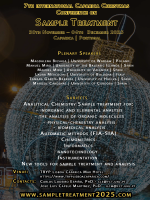Proteome response to heat stress in the Antarctic clam Laternula elliptica
DOI: 10.5584/jiomics.v3i1.125
Abstract
The proteome can be regarded as a molecular phenotype, as changes in protein expression patterns have a direct effect on organismal physiology and fitness. The analysis of the proteome can therefore be an invaluable tool for our understanding of the mechanisms underlying phenotypic changes in response to environmental change. However, proteomic studies on thermal stress in marine species have mainly focused on heat shock protein expression, and little information is available for other components of the cellular stress response. This is particularly limiting for Antarctic species, which can lack the ability to induce heat shock protein expression in response to experimentally induced heat stress. The present study analysed changes in protein expression patterns in the Antarctic clam Laternula elliptica after exposure to elevated temperatures using two dimensional gel electrophoresis and mass spectrometry. Acute exposure to elevated temperatures had an effect in global protein expression patterns, suggesting that L. elliptica has the capacity to alter protein expression in response to heat stress. Changes in the expression of 14 proteins out of 264 analysed were observed in response to different levels of heat stress. Four of the 14 proteins had database matches and were identified as the cytoskeletal protein tubulin and associated chaperone TCP-1, and the enzymes enolase and aldehyde dehydrogenase, part of the minimal stress proteome and involved in redox regulation.









